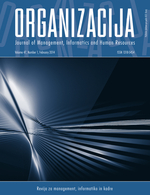Regular and Temporary Employees in Project Organized Business Pay Different Attention to Preconditions for Learning
Abstract
Background and purpose: The purpose is to investigate whether regular and temporary staff differ in their perceptions of preconditions for learning and if there are some qualitative aspects that can be considered particularly significant in these differences.
Design/Methodology/Approach: The approach consists of a case study based on both quantitative and qualitative data collected via an online questionnaire and individual interviews.
Results: The paper question the understanding of the organization as a singular and more or less cohesive unit. On an organizational level, the project owner who hires staff does not care for competence transfer between regulars and temps, or between different groups of staff. At the individual level, temps are more focused on their specific task compared to regulars. Regulars’ seems to safeguarding a community or an organizational perspective, while temps are looking for their own good.
Conclusions: There is a risk that one social unit differs, in attention payed to preconditions for learning, from another, when an organization use temporary staff. Therefore, the scientific value of this paper is that using temps may result in or be a consequence of a fragmented organization. The findings show no competence transfer in projects with both temps and regulars, and the project owner takes no active responsibility for human resource planning in terms of competence transfer between different groups of staff. The implications underline that long-term efficiency and rationality in an organization does not always have priority over organizational affiliation even with the hiring of expertise. When this happens, it may lead to a fragmented personnel group that is divided in thinkers/organizers and, performers/doers. When this happens, important practical skills fall outside of the organization, which in a metaphorical sense means that the hand is separated from the brain. Therefore, organizations with temporary staff need to plan for how to enable competence transfer between temporary and regular staff.
Keywords: competence transfer; inter-organization; project organization; temporary work
Refbacks
- There are currently no refbacks.

